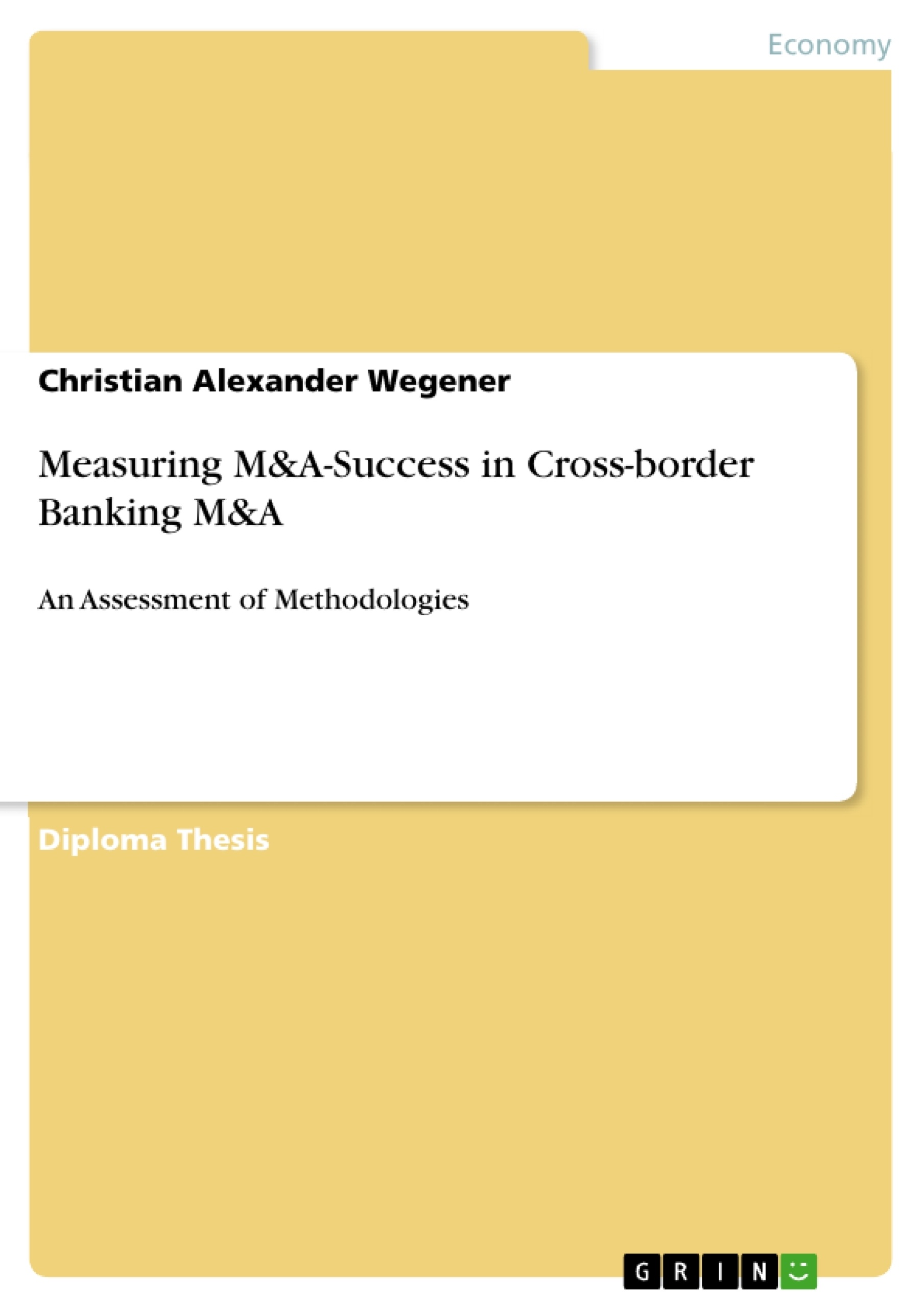The recent surge in European cross-border bank mergers and the limited amount of studies investigating the value-consequences of these transactions call for further research. This book assesses the methodologies that are in use to measure M&A success in order to support a rigorous use of these approaches in future analyses. Moreover, the assessment of the bank merger between Italy’s UniCredit and Germany’s Hypovereinsbank exemplifies the accurate application of these tools as well as the usefulness of appraising individual deals within a multi-methodology framework.
Inhaltsverzeichnis (Table of Contents)
- Introduction
- Assessment of methodologies
- Overview of methods to measure M&A-success
- Event study methodology
- Basic concepts
- Critical issues
- Long-horizon event study methodology
- Operating performance analysis
- Basic concepts
- Critical issues
- Frontier efficiency methodology
- Basic concepts
- Critical issues
- Case study research
- Basic concepts
- Critical issues
- A claim for a multi-methodology approach
- M&A-success in European banking – the case UniCredit-HVB
- Introductory remarks
- The selection of the merger case
- Presentation of transaction partners
- Transaction overview
- Qualitative analysis
- Evaluation framework - determinants of M&A-success
- Ex ante determinants
- How to evaluate M&A-strategy?
- Market-based-view
- Resource-based view
- Ex interim determinants
- Ex post determinants
- Quantitative analysis
- Short-horizon event study
- Long-horizon event study
- Operating performance analysis
- Introductory remarks
Zielsetzung und Themenschwerpunkte (Objectives and Key Themes)
This paper aims to assess the methodologies used to measure M&A-success in cross-border banking mergers. It seeks to provide a rigorous framework for analyzing the value consequences of such transactions. The paper utilizes the merger between UniCredit and Hypovereinsbank as a case study to demonstrate the application of these methodologies and highlight the benefits of using a multi-methodology approach.
- Evaluation of methodologies used to measure M&A-success in cross-border banking mergers.
- Application of a multi-methodology approach to analyze the value consequences of M&A transactions.
- Case study analysis of the UniCredit-HVB merger to exemplify the use of methodologies.
- Examination of the impact of M&A transactions on operating performance and financial outcomes.
- Assessment of the strategic and operational factors that influence the success of cross-border banking mergers.
Zusammenfassung der Kapitel (Chapter Summaries)
- Introduction: This chapter sets the stage for the paper, highlighting the growing importance of cross-border bank mergers in Europe and the need for a comprehensive understanding of their impact. It outlines the objectives of the study and the specific methodologies to be analyzed.
- Assessment of Methodologies: This chapter delves into the different methods used to measure M&A-success. It provides a detailed overview of each methodology, including its theoretical foundations, strengths, weaknesses, and application in practice. Specifically, it discusses event study methodology, operating performance analysis, frontier efficiency methodology, and case study research.
- M&A-success in European Banking – The Case UniCredit-HVB: This chapter focuses on the merger between UniCredit and Hypovereinsbank as a case study. It provides a thorough analysis of the merger, encompassing its background, strategic rationale, and implementation. Both qualitative and quantitative analyses are employed to evaluate the merger's impact on various aspects, including operational performance, financial outcomes, and strategic implications.
Schlüsselwörter (Keywords)
Cross-border Banking M&A, M&A-Success, Event Study Methodology, Operating Performance Analysis, Frontier Efficiency Methodology, Case Study Research, Multi-Methodology Approach, UniCredit-HVB Merger, Strategic Analysis, Financial Performance, Value Creation, Integration Challenges, European Banking Industry.
- Citation du texte
- Christian Alexander Wegener (Auteur), 2007, Measuring M&A-Success in Cross-border Banking M&A, Munich, GRIN Verlag, https://www.grin.com/document/165733



